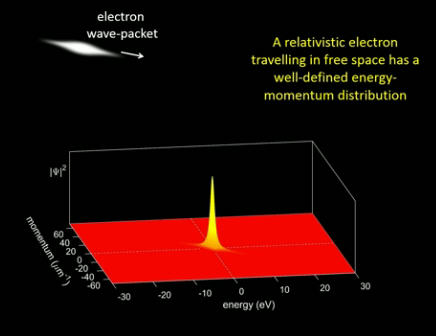Can ultrashort electron flashes help harvest nuclear energy?

A video illustrating the experiments and findings of this study. Credit: Fabrizio Carbone/EPFL
In fact, one of the most elusive phenomena in physics is the excitation of an atom's nucleus by absorption of an electron. The process, known as “nuclear excitation by electron capture” (NEEC), was theoretically predicted fourty years ago, though it proved difficult to observe experimentally.
But in February 2018, US physicists were finally able to catch a glimpse of NEEC in the lab. The work was hailed as ushering in new nuclear energy-harvesting systems, as well as explaining why certain elements like gold and platinum are so abundant in the universe.
The EPFL researchers in their publication suggest a way of potentially exploiting the several orders of magnitude in energy harvesting possibly present in the nucleus of an atom via the coherent control of the NEEC effect. Such method would be enabled by the availability of ultrashort (as to zs) electron flashes.
“Ideally, one would like to induce instabilities in an otherwise stable or metastable nucleus to prompt energy-producing decays, or to generate radiation,” says Carbone. “However, accessing nuclei is difficult and energetically costly because of the protective shell of electrons surrounding it.”
The authors state: “Our coherent control scheme with ultrashort electron pulses would offer a new perspective for the manipulation of nuclear reactions with potential implications in various fields, from fundamental physics to energy-related applications.”
###
Other contributors
Technion – Israel Institute of Technology
University of Glasgow
Ripon College (US)
The Barcelona Institute of Science and Technology
Catalan Institution for Research and Advanced Studies (ICREA)
Reference
G. M. Vanacore, I. Madan, G. Berruto, K. Wang, E. Pomarico, R. J. Lamb, D. McGrouther, I. Kaminer, B. Barwick, F. Javier García de Abajo, F. Carbone. Attosecond coherent control of free-electron wave functions using semi-infinite light fields. Nature Communications 12 July 2018. DOI: 10.1038/s41467-018-05021-x
Media Contact
All latest news from the category: Physics and Astronomy
This area deals with the fundamental laws and building blocks of nature and how they interact, the properties and the behavior of matter, and research into space and time and their structures.
innovations-report provides in-depth reports and articles on subjects such as astrophysics, laser technologies, nuclear, quantum, particle and solid-state physics, nanotechnologies, planetary research and findings (Mars, Venus) and developments related to the Hubble Telescope.
Newest articles

First-of-its-kind study uses remote sensing to monitor plastic debris in rivers and lakes
Remote sensing creates a cost-effective solution to monitoring plastic pollution. A first-of-its-kind study from researchers at the University of Minnesota Twin Cities shows how remote sensing can help monitor and…

Laser-based artificial neuron mimics nerve cell functions at lightning speed
With a processing speed a billion times faster than nature, chip-based laser neuron could help advance AI tasks such as pattern recognition and sequence prediction. Researchers have developed a laser-based…

Optimising the processing of plastic waste
Just one look in the yellow bin reveals a colourful jumble of different types of plastic. However, the purer and more uniform plastic waste is, the easier it is to…


